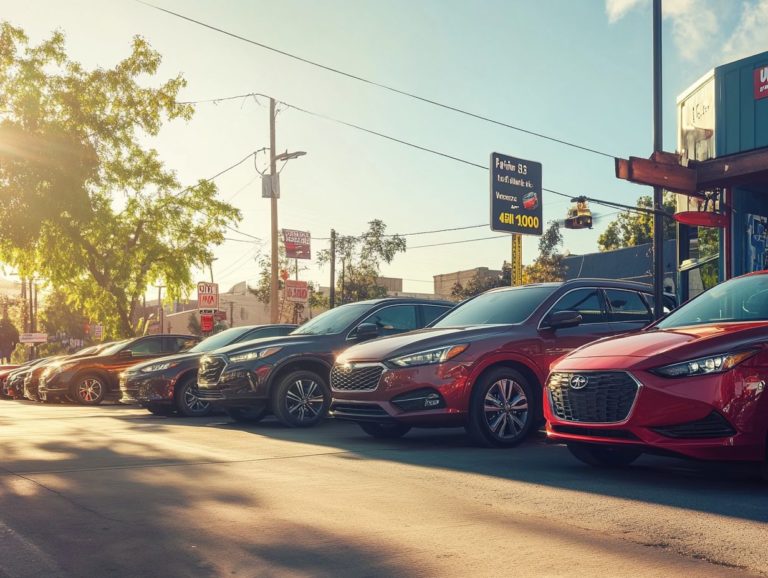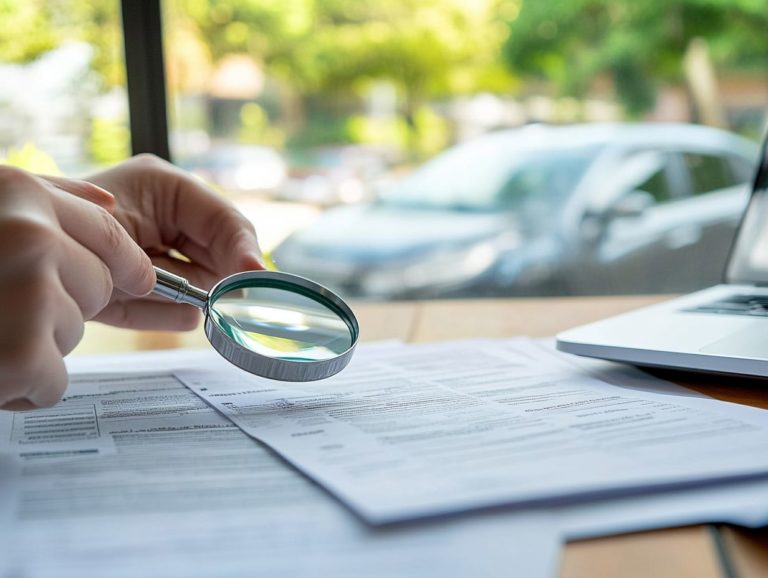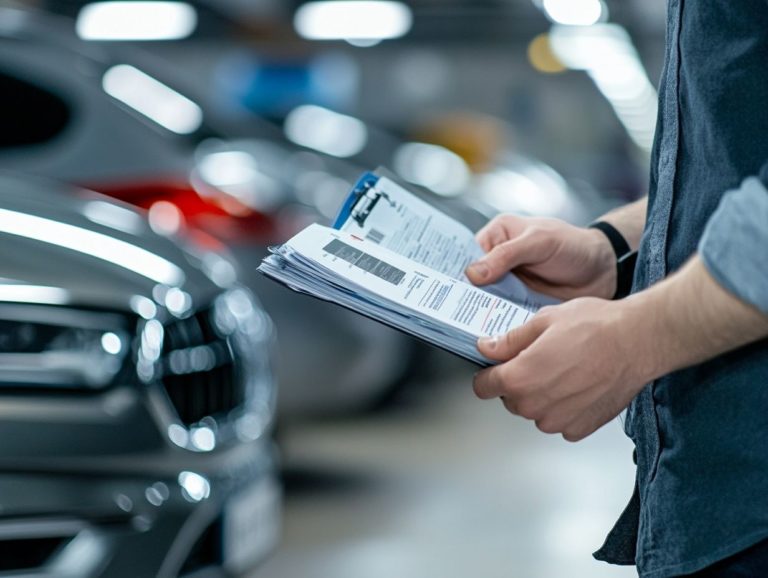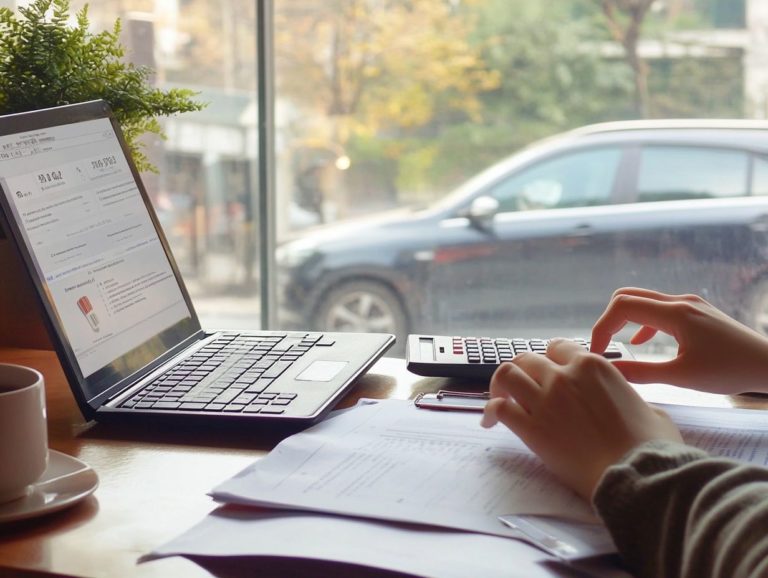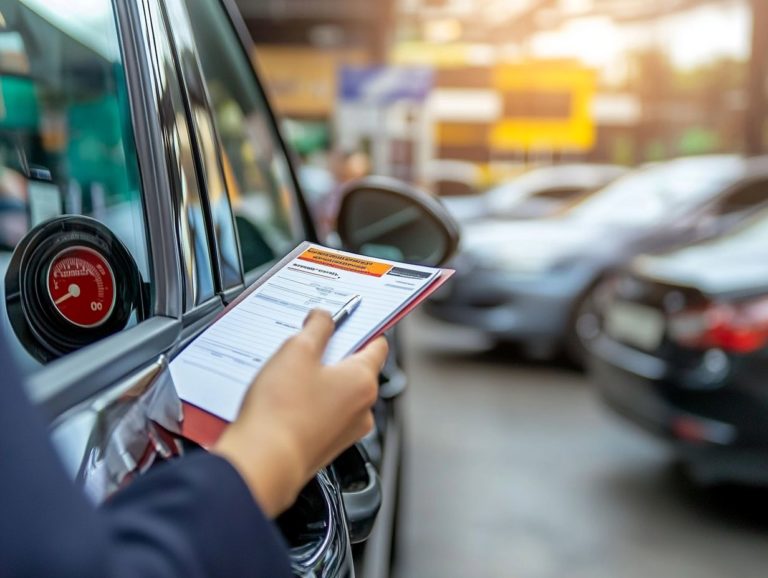Understanding Trade-In Value for Used Cars
When you’re considering upgrading your vehicle, grasping the concept of trade-in value is essential. This value dictates how much you’ll receive when you part with your old car and plays a pivotal role in shaping your purchasing strategy.
Factors such as age, mileage, and market demand can significantly influence this figure, making it crucial for you to be well-informed.
You’ll explore the intricacies of trade-in value, learn how to accurately determine it, and discover tips to maximize your return. You can also consider alternative options to trading in, ensuring you make the most informed decision for your unique situation.
Dive in to uncover how you can expertly navigate this vital aspect of car ownership and optimize your investment!
Contents
- Key Takeaways:
- What is Trade-In Value?
- Factors Affecting Trade-In Value
- How to Determine Trade-In Value
- Maximizing Your Trade-In Value
- Alternatives to Trade-In
- Frequently Asked Questions
- What is the trade-in value for a used car?
- How is the trade-in value determined?
- Can I negotiate the trade-in value for my used car?
- What are some ways to increase the trade-in value of my used car?
- Do I have to trade in my car at the same dealership where I am purchasing a new car?
- Can I use my trade-in value towards the purchase of a used car?
Key Takeaways:
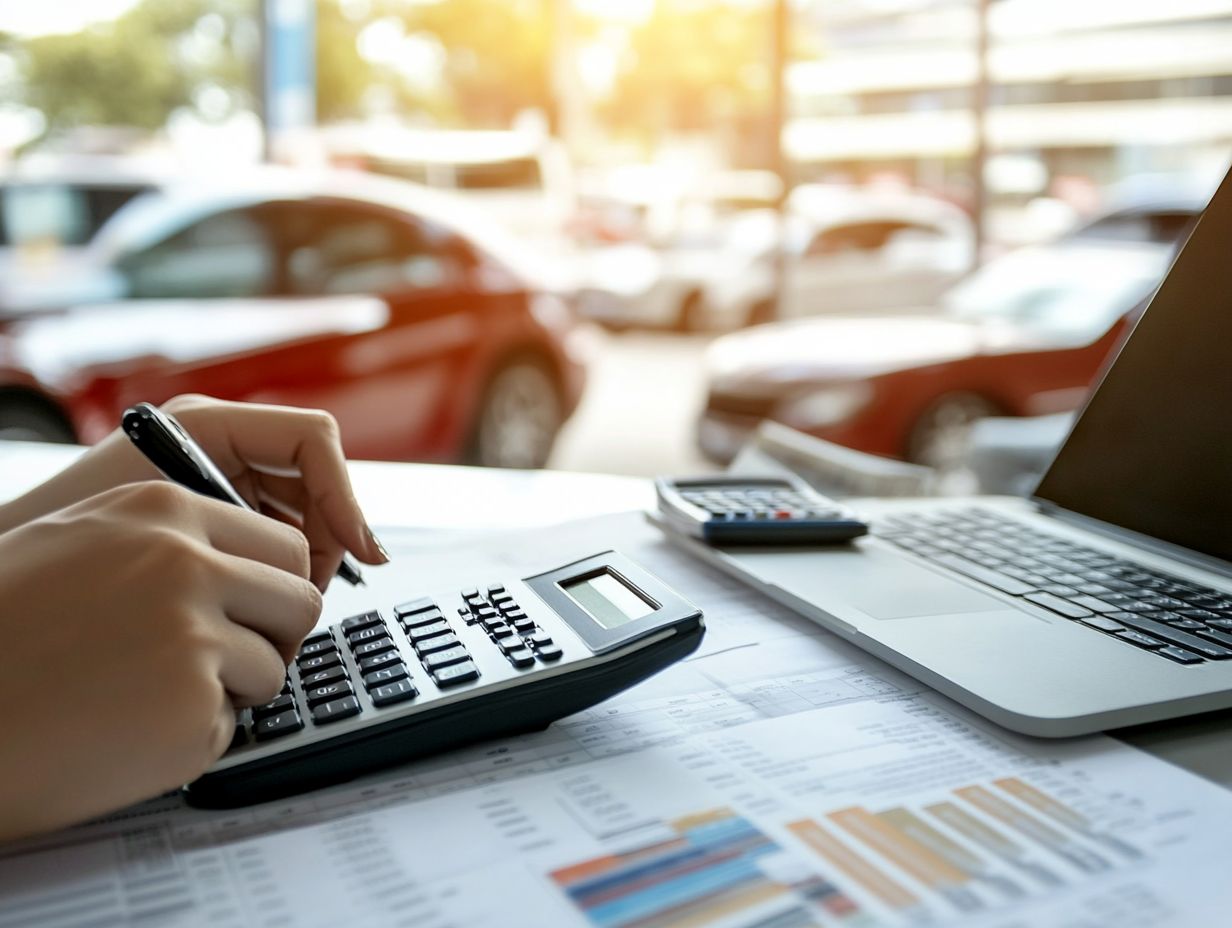
- Trade-in value is the amount a dealership will give you for your used car towards a new one.
- This value is influenced by factors like age, mileage, condition, and market demand.
- Research market prices to determine your car’s trade-in value and use strategies to maximize it.
What is Trade-In Value?
Trade-in value represents the sum a dealership is willing to offer you for your vehicle when you opt to trade it in for a new one. Understanding the nuances of trade-in value is essential for optimizing your financial return during an upgrade.
It can considerably lessen the amount you need to finance through a car loan. This value is shaped by a multitude of factors, including the car title, the condition of your vehicle, and current market trends.
These factors can result in either positive equity, meaning your car is worth more than what you owe, or negative equity, implying it s worth less. Understanding these elements gives you the power to make informed decisions for a better deal.
Definition and Importance
Trade-in value refers to the value that a dealership assigns to your current vehicle when you choose to trade it in for a new one, and it plays a crucial role in the automotive market.
This value directly impacts the overall cost of your new car, as it gets deducted from the purchase price. This results in a lower out-of-pocket expense for you.
Understanding how trade-in value operates can also assist you in navigating the complexities of positive or negative equity. Gaining insights into your vehicle s trade-in value empowers you to negotiate better offers at dealerships.
By doing so, you can ensure you receive a fair deal that aligns with your budget and financial objectives.
Factors Affecting Trade-In Value
Several factors influence the trade-in value of your vehicle. Consider the age and mileage of your car, as well as its overall condition.
Prevailing market demand also plays a crucial role, often shifting based on your location and current trends in the automotive industry.
Age and Mileage
The age and mileage of your vehicle are pivotal in determining its trade-in value, as both significantly affect depreciation and the dealer’s offer.
When assessing your vehicle, it’s essential to understand that older models typically lose value more quickly than newer ones, especially when paired with high mileage. For instance, imagine a five-year-old sedan with 70,000 miles; it’s likely to command a lower trade-in price compared to a similar model boasting only 30,000 miles.
It’s also wise to consider that certain brands or vehicle types, such as luxury cars or trucks, may experience varying rates of depreciation. Grasping these nuances gives you the power to strategize more effectively.
This enables you to make informed decisions about the timing of your trade-ins and select models that are known for retaining their value.
Vehicle Condition
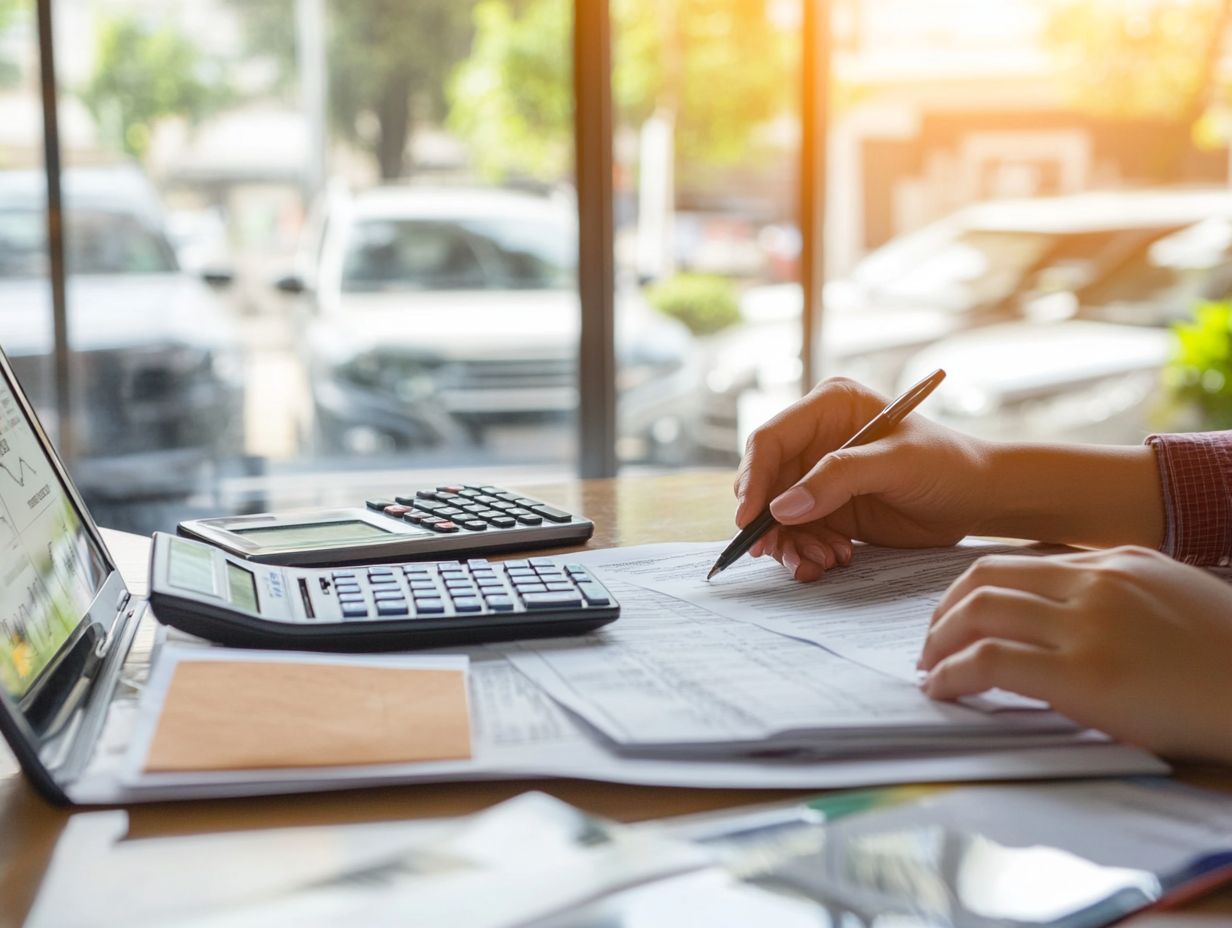
The condition of your vehicle is crucial in determining its trade-in value. Dealerships closely examine factors such as the exterior’s appearance, the cleanliness of the interior, and mechanical performance.
Maintaining meticulous records of your vehicle’s maintenance and repairs can significantly enhance its value. This documentation serves as proof of your consistent care and attention. Dealerships appreciate evidence of regular oil changes and timely brake inspections, which indicate responsible ownership.
Tire condition, alignment, and essential systems like air conditioning and electronics also impact the evaluation. A comprehensive maintenance history assures dealers of your vehicle s reliability and provides peace of mind for potential buyers, ultimately boosting your overall trade-in offer.
Market Demand
Market demand plays an important role in determining trade-in value, as changes in what people want to buy and economic conditions significantly influence dealership offers.
Understanding these trends is essential for anyone aiming to maximize their trade-in’s worth. For example, if interest in electric vehicles surges due to environmental awareness, your vehicle that fits this category could command a higher price. Conversely, an oversupply of SUVs may lead to decreased trade-in values.
It’s wise to monitor seasonal factors that can impact market demand, such as year-end clearance events or the release of new models. These moments can present opportunities for better offers.
By timing your trade-in strategically and showcasing features that align with current trends, you can significantly boost your chances of landing a favorable deal.
How to Determine Trade-In Value
Determining your vehicle’s trade-in value can be straightforward with the right methods. Consider using online appraisal tools and trusted valuation guides like Kelley Blue Book, Edmunds, or NADAguides, a trusted car valuation source that helps you understand your vehicle’s worth.
Also, don’t overlook offers from dealerships like CarMax, which provide clear insights into your vehicle’s worth.
Researching Market Prices
Researching market prices through resources like Kelley Blue Book, Edmunds, and NADAguides is crucial for accurately estimating your vehicle’s trade-in value. These platforms offer a wealth of real-time data reflecting current market trends and pricing.
Comparing similar makes and models helps you understand vehicle valuations in your area and equips you with essential information for negotiations. Consider factors such as mileage, condition, and additional features that could enhance your vehicle’s worth. Timing matters too; being aware of peak selling seasons can significantly influence your trade-in value.
With these insights, you can enter trade-in discussions confidently, maximizing your return on investment.
Using Online Tools and Resources
Utilizing online tools and resources for an appraisal can clarify your trade-in value. Platforms like CarMax and Black Book offer reliable estimates that you can trust.
To navigate these resources effectively, gather all relevant information about your vehicle, including its make, model, year, mileage, and condition. Entering accurate details ensures that the appraisal reflects its true value.
Unlike traditional appraisal methods that hinge on a single evaluator’s judgment, these platforms pull data from multiple sources, giving you a more comprehensive view of market trends. This not only helps you secure an accurate estimate but empowers you to make informed decisions, seamlessly blending online convenience with the benefits of in-person evaluations.
Don’t miss out! Start researching today to get the best value for your trade-in!
Maximizing Your Trade-In Value
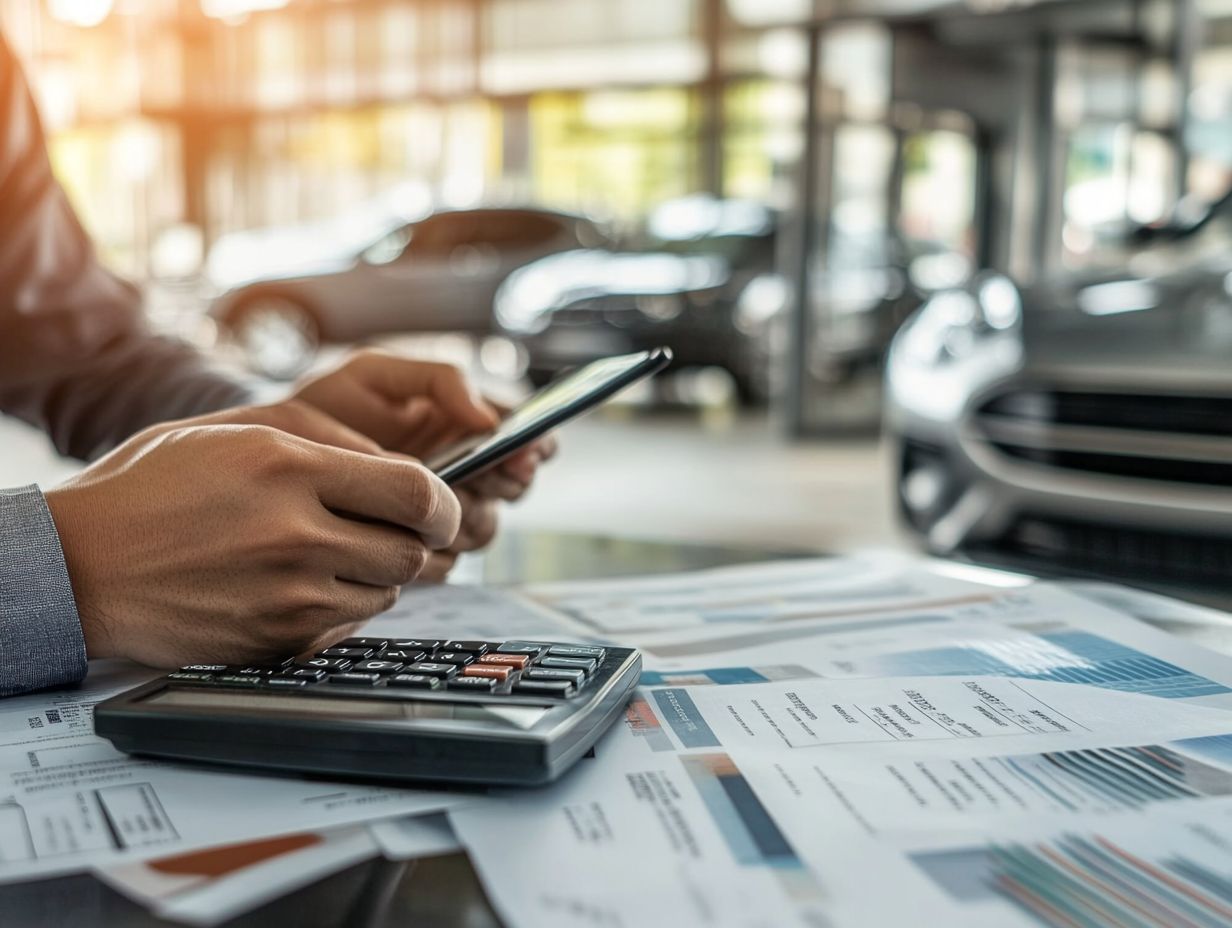
To maximize your trade-in value, employ effective strategies and tips. Keeping detailed maintenance records is essential as it shows the care you’ve taken with your vehicle.
Preparing for negotiations with dealerships empowers you to secure the best possible deal.
Smart Tips to Maximize Your Trade-In Value
Adopting strategic tips, such as keeping meticulous maintenance records and enhancing your vehicle’s aesthetic appeal, can significantly elevate its trade-in value.
Ensuring your vehicle is clean and well-presented creates a positive first impression on potential buyers.
Researching the market will give you an edge! Understand your car s current value based on its make, model, and condition. Gathering multiple offers from various dealerships can position you more powerfully during negotiations.
Leveraging facts and figures about your vehicle s history like its reliability and any recent upgrades can strengthen your case for a higher offer. By approaching discussions with confidence and clarity, you can deftly navigate the trade-in process and secure a more favorable deal.
Alternatives to Trade-In
Exploring alternatives to trade-ins opens up better financial opportunities for you. Consider selling your vehicle privately, which often yields a higher return, or weigh the benefits of leasing against purchasing a new car.
Each option presents unique advantages that can enhance your financial strategy.
Selling Privately vs. Trading In
Selling your vehicle privately can yield a more substantial return than trading it in at a dealership. This option allows you to avoid limitations on trade-in value and negotiate directly with potential buyers.
With this approach, you gain greater control over the sale process. You can set your own asking price and choose when to wrap up the deal.
However, it s important to acknowledge potential challenges, such as inconvenience and safety concerns when meeting interested parties.
If you have an outstanding car loan, consider how a private sale might affect the loan payoff process and necessary vehicle registration changes. Depending on your situation, trading in might simplify these elements, allowing for a smoother transition as the dealership handles the details for you.
Leasing vs. Buying
The choice between leasing and buying a vehicle is significant, with each path carrying its own financial nuances, especially concerning trade-in value and car loans.
Leasing often comes with a lower upfront cost and reduced monthly payments, making it appealing if you enjoy driving newer models frequently.
On the other hand, buying a vehicle brings the undeniable perk of ownership. With ownership, you have the freedom to keep the car for as long as you like, free from mileage limits.
While leasing might ease your immediate budget, consider the long-term costs associated with making continuous payments over the years.
At the end of a lease term, trade-in value isn t an option. In contrast, when you own your vehicle, the resale value can significantly influence your overall financial picture. So, weigh your options carefully and decide which route aligns best with your financial goals.
Frequently Asked Questions
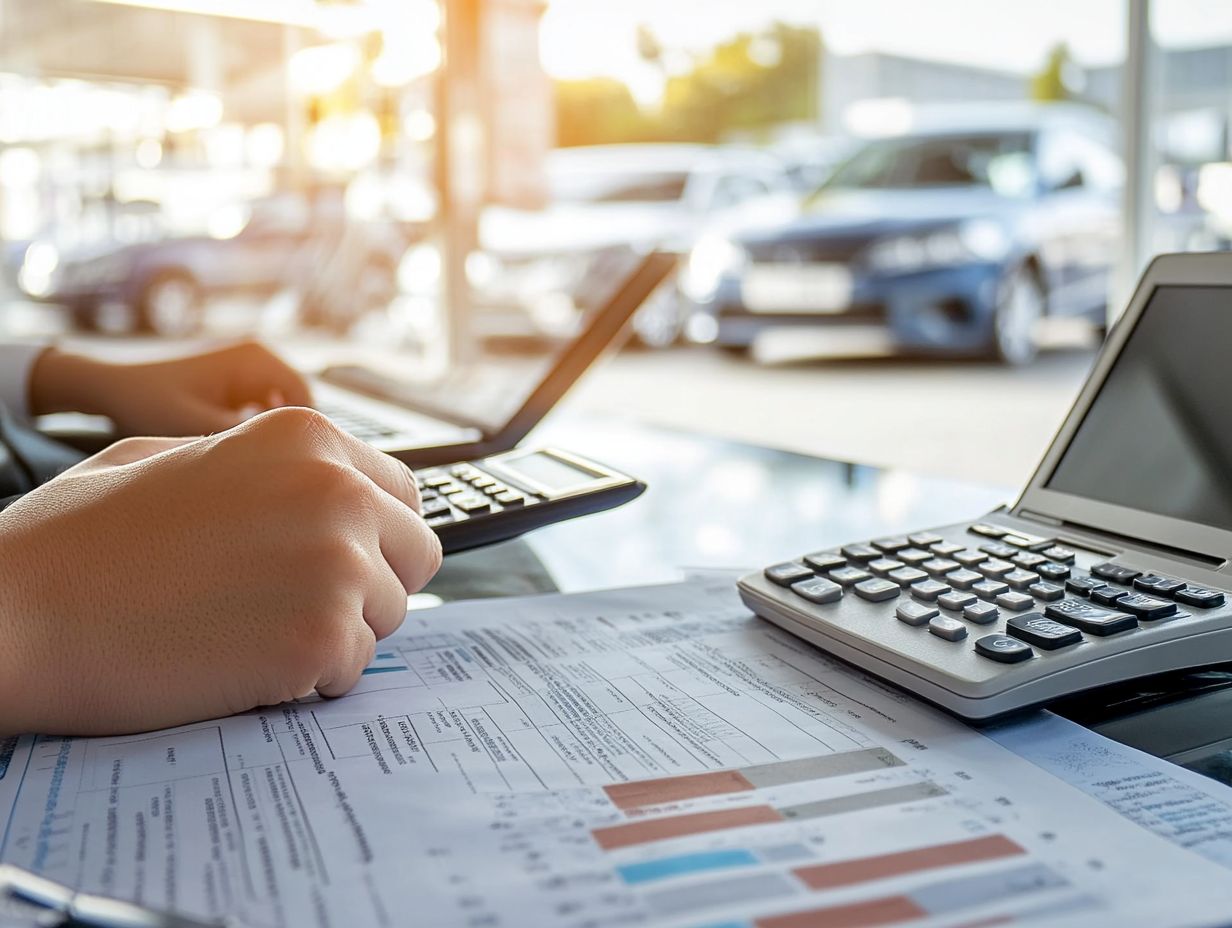
What is the trade-in value for a used car?
The trade-in value for a used car refers to the amount a dealership is willing to offer you for your vehicle if you decide to trade it in towards the purchase of a new car. This value is typically lower than the actual market value of your car, as the dealership needs to make a profit when reselling it.
How is the trade-in value determined?
The trade-in value of a used car depends on several factors. To get the best deal, it’s important to know about understanding the trade-in process for new cars, which includes the make, model, year, mileage, and overall condition of the vehicle.
Dealerships also look at how much demand there is for that specific model. Any special features or upgrades can also affect the value.
Can I negotiate the trade-in value for my used car?
Yes! You can negotiate the trade-in value for your used car. Dealerships might have a starting price, but they often expect some negotiation to make a sale.
Research the value of your car beforehand to approach negotiations with realistic expectations.
What are some ways to increase the trade-in value of my used car?
Keeping your car well-maintained can help boost its trade-in value. Regular oil changes and tire rotations show that you care for the vehicle.
A clean interior and exterior, along with any necessary repairs, can make a significant difference.
Do I have to trade in my car at the same dealership where I am purchasing a new car?
No, you can trade in your car at any dealership. You might also choose to sell it privately.
Some dealerships may offer better trade-in values if you purchase a car from them, so it’s worth considering.
Can I use my trade-in value towards the purchase of a used car?
Absolutely! You can apply your trade-in value to the purchase of a used car. The dealership usually deducts the trade-in amount from the car’s price.
Remember, this trade-in value is also negotiable, so don’t hesitate to discuss it!

